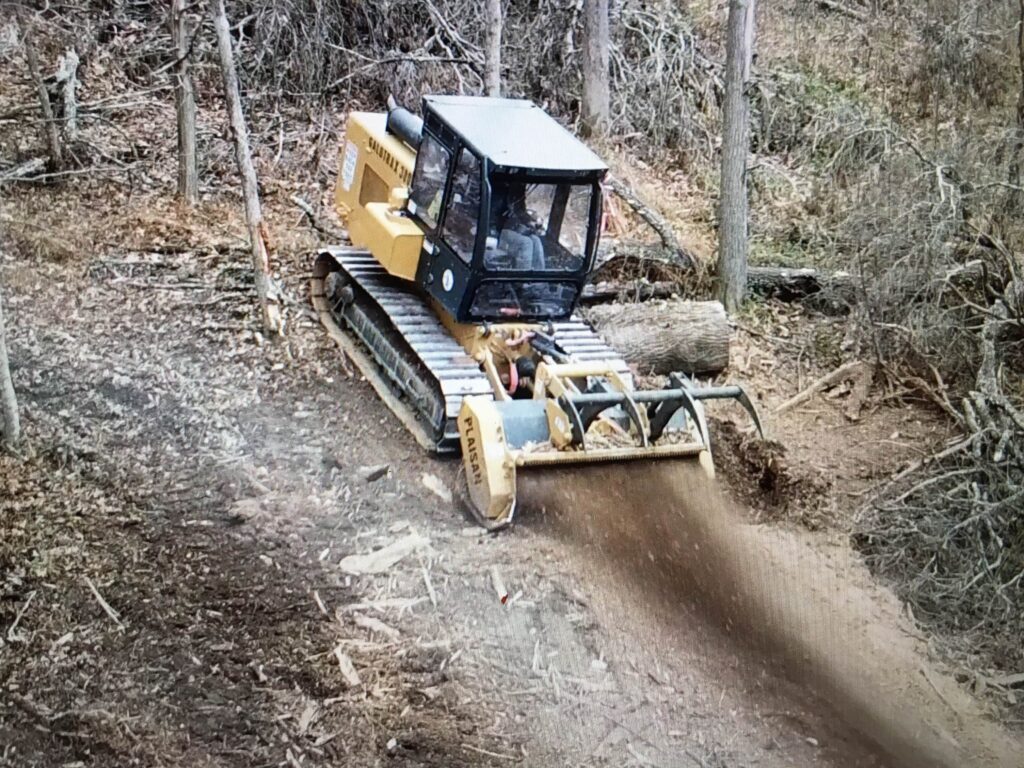In the realm of land management and environmental conservation, forestry mulching has emerged as a highly effective technique that combines efficiency with ecological benefits. This method involves the use of specialized machinery to grind down trees, brush, and other vegetation into mulch, which is then spread across the ground. While this process is often employed for land clearing, site preparation, and habitat restoration, its advantages extend far beyond mere aesthetics or land usability. One of the most significant benefits of this practice is its role in preventing soil erosion—a critical concern for both agricultural productivity and environmental health.
In this article, we will delve deeper into the process of forestry mulching, explore its various applications in land management, and highlight how it serves as an effective strategy for preventing soil erosion while fostering sustainable practices in our ecosystems. Whether you are a landowner looking to manage your property more effectively or simply interested in sustainable land practices, understanding forestry mulching can provide valuable insights into maintaining healthy landscapes for future generations.
1. Understanding Soil Erosion and Its Impact on the Environment
Soil erosion is a natural process that involves the displacement of the upper layer of soil, primarily due to wind, water, and human activities. This phenomenon can lead to significant environmental consequences, including the loss of fertile land, reduced agricultural productivity, and the degradation of ecosystems. When soil is eroded, it not only diminishes the land’s ability to support plant life but also contributes to sedimentation in waterways, which can harm aquatic habitats and disrupt the balance of local ecosystems.
The consequences of soil erosion extend beyond the immediate area; it can lead to increased flooding, reduced water quality, and even contribute to climate change by releasing stored carbon into the atmosphere. The impact of soil erosion is particularly pronounced in areas with steep slopes or where vegetation has been removed. Deforestation, urban development, and agricultural practices that do not prioritize soil health can exacerbate erosion rates.
As soil is washed away, essential nutrients are lost, making it increasingly difficult for plants to thrive. This cycle can create a feedback loop where diminished vegetation leads to further erosion, ultimately resulting in barren landscapes that are unable to support wildlife or human activity.
2. The Role of Forestry Mulching in Soil Conservation
Forestry mulching is a land management technique that involves the use of specialized machinery to grind down vegetation into mulch. This process not only clears land for various purposes but also plays a vital role in soil conservation. By leaving a layer of organic material on the ground, this method helps protect the soil from the erosive forces of wind and water.
The mulch acts as a barrier, reducing the impact of raindrops on the soil surface and minimizing runoff. This protective layer also aids in moisture retention, which is essential for maintaining healthy soil and promoting plant growth. Moreover, this process contributes to soil health by enhancing its structure and fertility.
As the mulch decomposes, it adds organic matter to the soil, improving its nutrient content and promoting beneficial microbial activity. This process not only supports existing vegetation but also encourages the growth of new plants, which can further stabilize the soil. By fostering a diverse plant community, forestry mulching helps create a resilient ecosystem that can withstand environmental stressors such as drought or heavy rainfall.

3. Benefits of Forestry Mulching for Preventing Soil Erosion
The benefits of forestry mulching extend beyond mere soil protection; they encompass a range of ecological and economic advantages. One of the primary benefits is its ability to reduce erosion rates significantly. By providing a protective layer over the soil, mulching minimizes surface runoff and helps maintain soil integrity during heavy rains.
This is particularly important in areas prone to flash flooding or where steep slopes are present, as it can prevent catastrophic erosion events that lead to loss of land and property. In addition to erosion control, it will promotes biodiversity by creating a more hospitable environment for various plant species. The mulch provides habitat for insects and other organisms that contribute to a healthy ecosystem.
Also, by improving soil health and fertility, forestry mulching can enhance agricultural productivity in surrounding areas. Farmers who adopt this practice may find that their crops require less irrigation and fertilizer, leading to cost savings and more sustainable farming practices.
4. Best Practices for Implementing Forestry Mulching
To maximize the effectiveness of forestry mulching in preventing soil erosion, certain best practices should be followed. First and foremost, it is essential to assess the specific site conditions before implementing mulching techniques. Factors such as soil type, slope gradient, and existing vegetation should be considered to determine the most appropriate approach.
For instance, in areas with steep slopes, it may be beneficial to combine mulching with other erosion control measures such as terracing or planting cover crops. Additionally, timing plays a crucial role in the success of forestry mulching. Conducting mulching operations during dry periods can help minimize soil disturbance and ensure that the mulch remains intact during heavy rains.
It is also important to monitor the site after mulching to evaluate its effectiveness in preventing erosion and promoting vegetation growth. Regular assessments can help identify any areas that may require additional attention or intervention.
5. The Future of Soil Conservation through Forestry Mulching
As awareness of environmental issues continues to grow, forestry mulching is likely to play an increasingly important role in soil conservation efforts. With climate change posing significant challenges to land management practices, innovative solutions like mulching offer a sustainable way to protect soil health while promoting biodiversity. The integration of mulching into broader land management strategies can help mitigate the impacts of extreme weather events and enhance ecosystem resilience.
Looking ahead, advancements in technology may further improve the efficiency and effectiveness of forestry mulching practices. For example, precision mulching equipment equipped with sensors could optimize mulch application based on real-time soil conditions. Additionally, increased collaboration between landowners, conservation organizations, and government agencies could foster a more comprehensive approach to soil conservation that incorporates it as a key component.
Protect Your Land Today with Forestry Mulching – Start Preventing Soil Erosion
In conclusion, this method stands out as an effective and environmentally friendly method for land clearing and to prevent soil erosion. If you are in Tennessee and seeking professional forestry mulching services, look no further than Mid State Land Clearing. With our extensive experience in the field, state-of-the-art equipment, and unwavering commitment to customer satisfaction, we are well-equipped to handle your land clearing needs. Our team understands the unique challenges posed by different terrains and vegetation types, ensuring that we deliver tailored solutions that meet your specific requirements.
We invite you to reach out to us today for a free quote on our forestry mulching services. Let us help you transform your land into a more manageable and visually appealing space while promoting sustainable practices. Your project is important to us, and we look forward to partnering with you on this journey toward effective land management.
